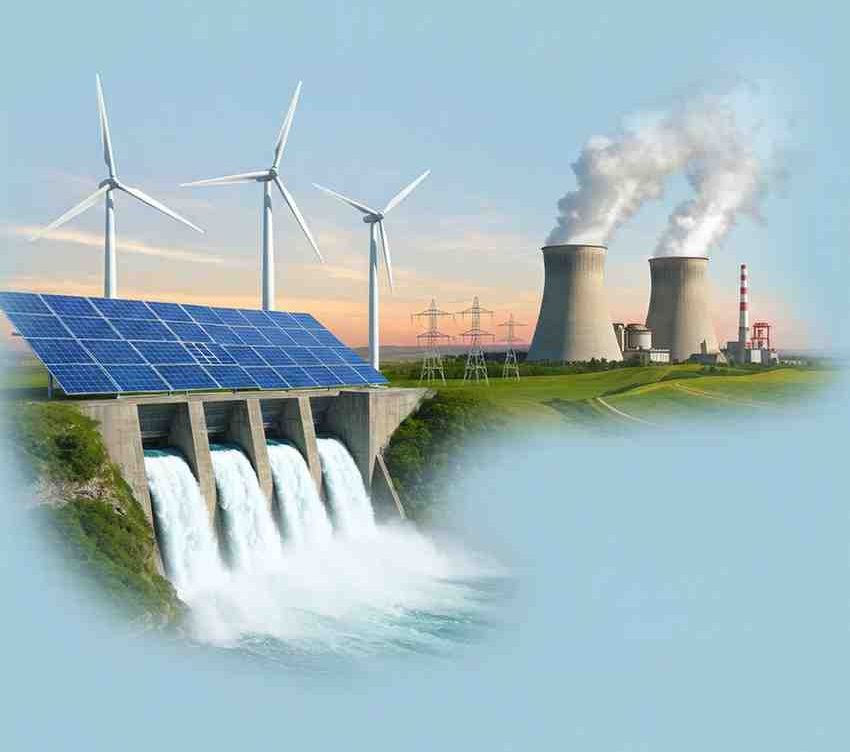
India’s Renewable Energy Revolution: Beyond Solar and Wind
India’s Renewable Energy Revolution: Beyond Solar and Wind
Diversifying India’s Clean Energy Portfolio
Thank you for reading this post, don't forget to subscribe!India is a global leader in the transition to sustainable energy, driven by its ever-growing energy demands and a strong commitment to curbing carbon emissions. While solar and wind power have played a crucial role in India’s renewable energy journey, their inherent limitations, like intermittency (fluctuating availability) and land-use challenges, underscore the urgent need for diversification. Emerging renewable energy technologies offer exciting new pathways to bolster India’s energy mix and secure a truly sustainable energy future. This article explores these promising alternatives, highlighting their potential and investment opportunities.
The Current Landscape of Renewable Energy in India: Strengths and Challenges
India has made commendable progress in the renewable energy sector, earning a place among the world’s top countries for installed solar and wind power capacity. Government initiatives, such as the National Solar Mission and ambitious wind energy targets, have fueled this impressive growth. However, over-reliance on solar and wind power exposes the grid to intermittency issues. Sunlight isn’t constant, and wind doesn’t always blow. Furthermore, large-scale solar and wind farms require significant land resources, which can create conflicts with other land uses. To mitigate these challenges and ensure a reliable, consistent energy supply, exploring and investing in alternative renewable energy technologies is paramount.
Emerging Renewable Energy Technologies in India: A Deep Dive
Several promising technologies are emerging as key players in India’s renewable energy future:
- Green Hydrogen: Fueling a Clean Future: Green hydrogen, produced by electrolyzing water using renewable energy, is a game-changing clean fuel with vast potential. India’s National Green Hydrogen Mission aims to establish the nation as a global hub for green hydrogen production and application. Green hydrogen has diverse applications, ranging from decarbonizing industrial processes like steel manufacturing and fertilizer production to powering transportation (fuel cell vehicles) and contributing to electricity generation. For investors seeking to capitalize on this burgeoning sector, researching the best green hydrogen stocks in India is essential. This nascent industry is ripe with opportunity, but careful due diligence is crucial.
- Biomass Energy: Tapping into Agricultural Resources: Biomass energy involves converting organic materials, such as agricultural waste, forestry residues, and municipal solid waste, into usable energy. India, with its large agricultural sector, possesses substantial potential for biomass energy generation. Government initiatives like the National Bio-Energy Mission are designed to support biomass projects and incentivize their development. However, challenges related to feedstock availability, efficient collection and transportation logistics, and sustainable sourcing practices need to be addressed to fully realize biomass energy’s potential.
- Geothermal Energy: Harnessing the Earth’s Heat: Geothermal energy taps into the Earth’s internal heat to generate electricity. India, with its geothermal hotspots in regions like Ladakh and Himachal Pradesh, holds significant untapped geothermal potential. The Ministry of New and Renewable Energy (MNRE) is actively promoting pilot projects and research initiatives to explore and develop this clean and consistent energy resource. Geothermal energy offers a stable, baseload power source, unlike intermittent renewables.
- Small Hydropower (SHP): Decentralized Energy Solutions: Small hydropower projects utilize the natural flow of water in rivers and streams to generate electricity, offering decentralized and localized energy solutions, especially in remote or hilly areas. India has identified over 5,000 potential SHP sites. The government provides subsidies and various incentives to encourage SHP development, recognizing its potential for rural electrification and grid stability.
- Ocean Energy (Tidal and Wave): Untapped Coastal Potential: With its extensive coastline, India has enormous potential for harnessing the power of the ocean through tidal and wave energy. The MNRE has officially recognized ocean energy as a renewable energy source and is actively encouraging research and pilot projects to unlock this vast, largely untapped resource. While still in its early stages, ocean energy offers a predictable and reliable source of clean power.
- Concentrated Solar Power (CSP): Solar Energy with Storage: Concentrated Solar Power (CSP) systems use mirrors or lenses to focus sunlight onto a receiver, generating high temperatures to produce steam, which then drives a turbine to generate electricity. A key advantage of CSP over traditional solar photovoltaic (PV) systems is that CSP can incorporate thermal energy storage, allowing for electricity generation even after sunset or during cloudy periods. India is actively exploring CSP technology through programs like the National Solar Thermal Power Program.
Investment Opportunities in Emerging Renewable Energy: A Bright Outlook
Emerging renewable energy technologies in India present compelling investment opportunities for both domestic and international investors. Government initiatives, including tax benefits, production-linked incentives (PLIs), and renewable energy certificates (RECs), provide strong support to investors in the sector. Beyond green hydrogen, the broader renewable energy landscape offers a diverse range of investment options, from manufacturing components for these technologies to developing and operating renewable energy projects. For those interested in the solar energy sector, in addition to exploring green hydrogen investments, research into the best solar stocks in India can provide valuable insights. The long-term growth prospects for these technologies are exceptionally bright, driven by the increasing global demand for clean energy and India’s unwavering commitment to achieving net-zero emissions. As investors look to build robust portfolios for 2025 and beyond, renewable energy stocks should be a core component of any forward-looking investment strategy.
Conclusion: Charting a Sustainable Energy Path for India
India’s renewable energy future extends far beyond solar and wind power. Emerging technologies like green hydrogen, biomass energy, geothermal energy, small hydropower, ocean energy, and concentrated solar power hold the key to diversifying the nation’s energy mix, enhancing energy security, and driving sustainable economic growth. Investing in these innovative technologies not only offers significant potential for long-term financial returns but also contributes to a cleaner, more sustainable future for India and the world. Staying informed about the latest developments in these dynamic sectors and exploring promising investment avenues is crucial for participating in India’s renewable energy revolution.
Related Blogs:
Best Green Energy Stocks in India 2025
Renewable Energy Stocks: A Core Component of a Robust 2025 Portfolio
How Investors Can Capitalize on the Growth of Renewable Energy in India
India’s Renewable Energy Revolution: Beyond Solar and Wind
Best Green Energy Stocks in India
Best Solar Stocks in India
Best Green Hydrogen Stocks in India
Top 5 Solar Energy Stocks in India
Best Green Hydrogen Stocks in India
Top 5 Green Energy Stocks in India
Disclaimer: This blog post is intended for informational purposes only and should not be considered financial advice. The financial data presented is subject to change over time, and the securities mentioned are examples only and do not constitute investment recommendations. Always conduct thorough research and consult with a qualified financial advisor before making any investment decisions.

